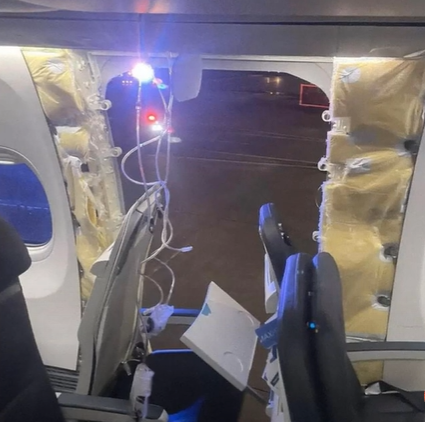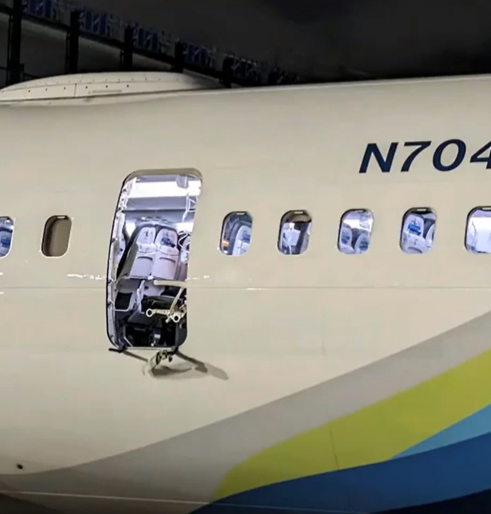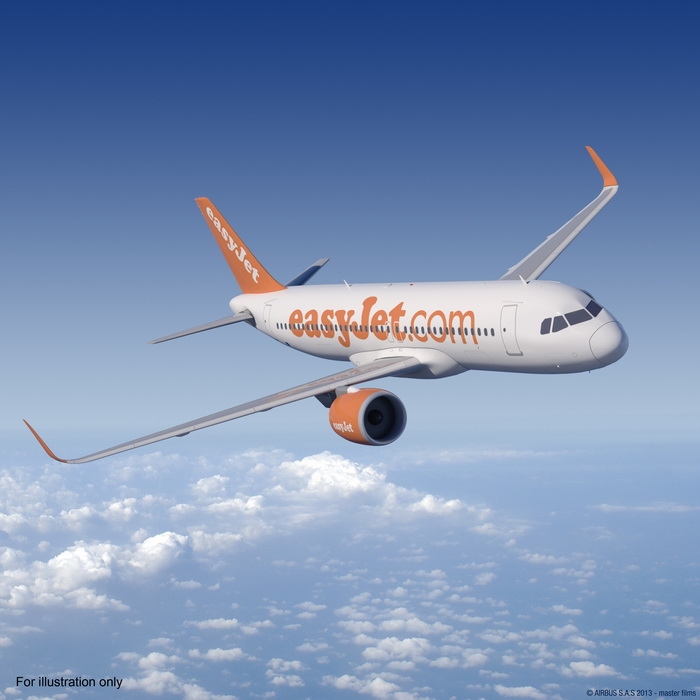Leeham News and Analysis
There's more to real news than a news release.
Bjorn’s Corner: New engine development. Part 3. Propulsive efficiency
April 12, 2024, ©. Leeham News: We have started an article series about engine development. The aim is to understand why engine development now dominates the new airliner development calendar time and the risks involved.
To understand why engine development has become a challenging task, we need to understand engine fundamentals and the technologies used for these fundamentals. We started last week with thrust generation, now we develop this to propulsive efficiency.
When does a larger airliner pay off
Subscription required
By Bjorn Fehrm
March 7, 2024, © Leeham News: Over the last decades, the choice of domestic market airliners has gone from the typical 120-seater to today 200 seats or more. We will look into what drives these decisions and where the cross-over points are from, say, an Airbus A319 to A320 and then to A321. We will limit the investigation to the Airbus range as the Boeing 737 MAX range has still not their MAX 7 and MAX 10 in service.
We will use our Airliner Performance and Cost Model (APCM) to model typical sectors and investigate what load factors favor a switch.
Summary:
- The typical domestic cabins have gone from 120 to 150 seats to now 200 seats or above.
- As airliner types grow, their trip costs increase. At what load factors can you motivate an A321 instead of an A320?
Pontifications: Boeing violated previous FAA ODA, SMS demands—Been there, done that
March 5, 2024, © Leeham News: The Federal Aviation Administration (FAA) last week gave The Boeing Co. 90 days to come up with a real program that has measurable results to fix safety and quality shortcomings.
The move follows the release on Feb. 26 of a year-long safety audit by a panel of 24 industry experts appointed by the FAA. More than 50 recommendations were made. Much of the focus was on failures in Boeing’s Organization Designation Authority (ODA), the Safety Management System (SMS), and pressure and fear of retaliation of employees who came forward with alerts about safety issues during aircraft production at Boeing Commercial Airplanes (BCA).
ODAs are employed by Boeing but represent the FAA. The FAA is considering establishing an independent ODA system at Boeing.
In giving Boeing 90 days to come up with a solid safety program, Administrator Mike Whitaker was blunt: “Boeing must commit to real and profound improvements. Making foundational change will require a sustained effort from Boeing’s leadership, and we are going to hold them accountable every step of the way, with mutually understood milestones and expectations.”
Boeing is the top aerospace company with the most fines and number of records, according to the website Violation Tracker. This is for all types of fines, including aviation safety, environmental, worker safety (under the USA’s OSHA), etc. Detail of Boeing’s aviation safety violations is below. Boeing’s number above includes the $2.5bn fine for the 2018-19 MAX crisis. Airbus includes a $500m settlement to the US Department of Justice for ITAR violations. Click on image to enlarge.
But Boeing and the FAA have been down this road before. Boeing and the FAA established the ODA systems ago and the SMS was created in 2019. The FAA previously fined Boeing for failing to follow through on elements of both programs.
Boeing’s program accounting reduce future profits
Subscription required
By Bjorn Fehrm
February 29, 2024, © Leeham News: Boeing published the results for 2023 on the 1st of February. It reported a loss of $2.2bn, compared with a loss of $5.0bn for 2022.
Experienced industry analysts know these results do not reflect the company’s state, neither for 2023 nor for 2022. The reason is Boeing uses so-called program accounting for the production costs of its Commercial Aircraft programs. Based on Boeing data, the loss for 2023 would have been at least $3bn higher using classical accounting methods.
The program accounting idea is to average the high initial cost per produced unit of a new aircraft program with the lower production costs of units later in the program. Thus it smooths the reported profits for a new aircraft program.
It has recently been used to “smooth” reported results of troubled aircraft programs, like the 737 MAX. The drawback is that once the troubles are gone, the negative effects on the company’s future profits are not. We will use the 737 MAX troubles to show the effect of this variant of program accounting.
Summary:
- Boeing increased the 737 Max deferred production cost pushed to future payment by 730% between the end of 2018 and the end of 2023.
- The result of this way of using program accounting to reduce what is shown today is that future profits of the 737 MAX program will be reduced by almost a billion dollars per year during the next 10 years.
Boeing’s safety improvement since the 2018-19 MAX crisis needs more work
Editor’s Note: This story was written before the release yesterday of an independent Expert Panel appointed by Congressional mandate to review Boeing’s safety culture. The report may be downloaded here: Boeing Safety Study by FAA Panel 2-26-24
By Scott Hamilton

The interior of the Alaska Airlines Boeing 737-9 MAX at Row 26, where the emergency exit door plug separated from the airplane at 16,000 ft.
Feb. 27, 2024, © Leeham News: The safety culture at Boeing Commercial Airplanes (BCA) came under fire again following the Jan. 5 Alaska Airlines Flight 1282 accident in which an emergency exit door plug separated from the plane on climb out from the Portland (OR) airport.
The plane, a 10-week-old 737-9 MAX, fully depressurized at about 16,000 ft. Nobody died and injuries were slight. Damage throughout the cabin and into the cockpit occurred when the door plug, at row 26, blew out. Pilots landed the plane safely at Portland 14 minutes after the decompression.
Within days, quality “escapes” were determined to have occurred at Spirit AeroSystems, which built the fuselage and door plug, and at Boeing during final assembly. Since Boeing had the fuselage last and its employees completed the final assembly, Boeing’s ultimately responsible for the quality escapes.
Boeing Co. CEO David Calhoun was quick to accept responsibility for the company. Such life-threatening escapes should never happen, he said. Calhoun appointed an independent safety committee headed by a retired Admiral, Kirkland Donald, with a nuclear submarine safety background.
The appointment of a special safety committee is reminiscent of a board-level safety committee appointed in September 2019 by then-chairman and CEO Dennis Muilenburg in the aftermath of the MAX crisis following the October 2018 and March 2019 fatal accidents of two 737-8 MAXes. These accidents killed 348 people and led to a 21-month grounding of the global MAX fleet from March 13, 2019.
Jon Holden, the president of Boeing’s largest union, the IAM 751, said neither he nor others from the union had any contact from the 2019 committee. Boeing’s engineering and technicians union, SPEEA, declined comment. But a source familiar with the situation said the union didn’t see any changes implemented from the 2019 committee at its level.
Breaking News: Congressionally-mandate safety study finds flaws at Boeing (Updated with Boeing comment)
 Feb. 26, 2024, © Leeham News: A Congressionally-mandated safety review study of Boeing Commercial Airplanes (BCA) dropped this morning. The 50-page report of a committee appointed by the Federal Aviation Administration found serious flaws in Boeing’s safety culture despite years of attempts to improve.
Feb. 26, 2024, © Leeham News: A Congressionally-mandated safety review study of Boeing Commercial Airplanes (BCA) dropped this morning. The 50-page report of a committee appointed by the Federal Aviation Administration found serious flaws in Boeing’s safety culture despite years of attempts to improve.
LNA is still absorbing the study, which may be downloaded here: Boeing Safety Study by FAA Panel 2-26-24
The Executive Summary is synopsized below.
Related Articles
- What is an ODA
- Reconstituting Boeing’s ODA
- Understanding the ODA
- Examining the ODA system
- Congress is ultimately responsible for safety mess
Ultimately, Congress is responsible for mess at FAA, Boeing, Spirit, et al
Editor’s note: Mondays are ordinarily paywall days. Because of the nature of this topic, today’s article is a freewall post.
By Scott Hamilton
Commentary

The Alaska Airlines Boeing 737-9 MAX that was involved in the Jan. 5, 2024, accident. The door plug for this emergency exit blew off the airplane during climb out from the Portland (OR) airport. Nobody died and injuries were minor.
Feb. 26, 2024, © Leeham News: There’s no getting around the culpability of the Federal Aviation Administration (FAA), Boeing, and Spirit AeroSystems in the current 737 MAX mess. Nor was there any doubt about the culpability of the FAA and Boeing in the first MAX crisis in 2018-2019.
But let’s face it: Ultimately, Congress is where the buck stops. Because Congress for decades failed to appropriate the bucks needed for the FAA to do its job without overreliance on Boeing or Spirit.
Shifting oversight responsibilities and diminishing the FAA’s role may well have been the result of effective lobbying by Boeing and others in the aerospace industry. Congress could have rejected changes to laws governing the FAA’s oversight authority in favor of Boeing and other aerospace companies.
So, it’s Congress, once again, that is ultimately culpable.
Let’s not be naïve. There is no way Congress or Members of Congress will step up to assume responsibility for the mess the US commercial aviation industry sees itself in today.
Make the fix on Boeing 737-9 door plug fail-safe
By the Leeham News Team
Commentary

Four missing bolts were the reason the emergency exit door plug separated from a Boeing 737-9. The inspections-and-repair edict from the FAA may not be enough for a fail-safe fix. Credit: NTSB.
Feb. 20, 2024, © Leeham News: Four missing bolts on an emergency exit door plug leg to the in-flight decompression of Alaska Airlines Flight 1282 on Jan. 5 of this year.
It’s not yet clear why the four locking bolts were not installed in the incident aircraft, a Boeing 737-9.
Information revealed to date by the National Transportation Safety Board (NTSB) discovered that Boeing removed the door plug in an unplanned process when some defects were discovered with some rivets. When Boeing line workers reinstalled the plug, for reasons as yet unknown, the four retaining bolts were not reinstalled. The bolts became separated from the plug during the removal. So far as is known, the four bolts never have been found in the factory. The NTSB’s investigation continues.
The Federal Aviation Administration (FAA) grounded the MAX 9s for three weeks while inspection and repair procedures were prepared, approved, and implemented. Inspections were expanded to the MAX 9’s predecessor, the 737-900ER, which had the same door plug. No grounding was required of the -900ER.
Although the processes solved the concerns over all MAX 9s produced to date, the question arises whether the procedures are sufficiently fail-safe going forward.
The inspection of the fleet to verify the correct installation of the lock bolts appears to leave a gap for future production, unplanned plug removals, and reinstallation.
Ryanair, Southwest, United take biggest hit from FAA cap on 737 MAX production
By Scott Hamilton
Feb. 16, 2024, © Leeham News: When the Federal Aviation Administration (FAA) put a freeze on Boeing 737 production rates at the currently approved 38/mo level, LNA revealed that hundreds of orders will face delivery delays. Boeing faces even greater delays than the 38/mo production level suggests, however.
As LNA reported, and confirmed by several aerospace analysts, Boeing’s true production rate for the 737 was 31 per month and even lower—as little as around 20 per month in some periods. The balance of deliveries came from its large inventory of 737 MAXes built during the first nine months of the 21-month grounding of the aircraft.
With Boeing’s full year 2023 delivery data now available, LNA looked at 2024 deliveries that were planned before the Jan. 5 Alaska Airlines 737-9 MAX emergency door plug blew off Flight 1282 on climb out from Portland (OR).
The incident was characterized as an accident due to the nature of the event and damage to the airplane. Nobody died and there were only minor injuries. The decompression at about 16,000 ft. damaged the door surround at row 26 on the left side. The door plug separated from the airplane and was found in a wooded area a few days later. There was damage throughout the 737’s cabin and the cockpit door was ripped off its mountings.
The pilots landed the airplane a few minutes later in Portland.








